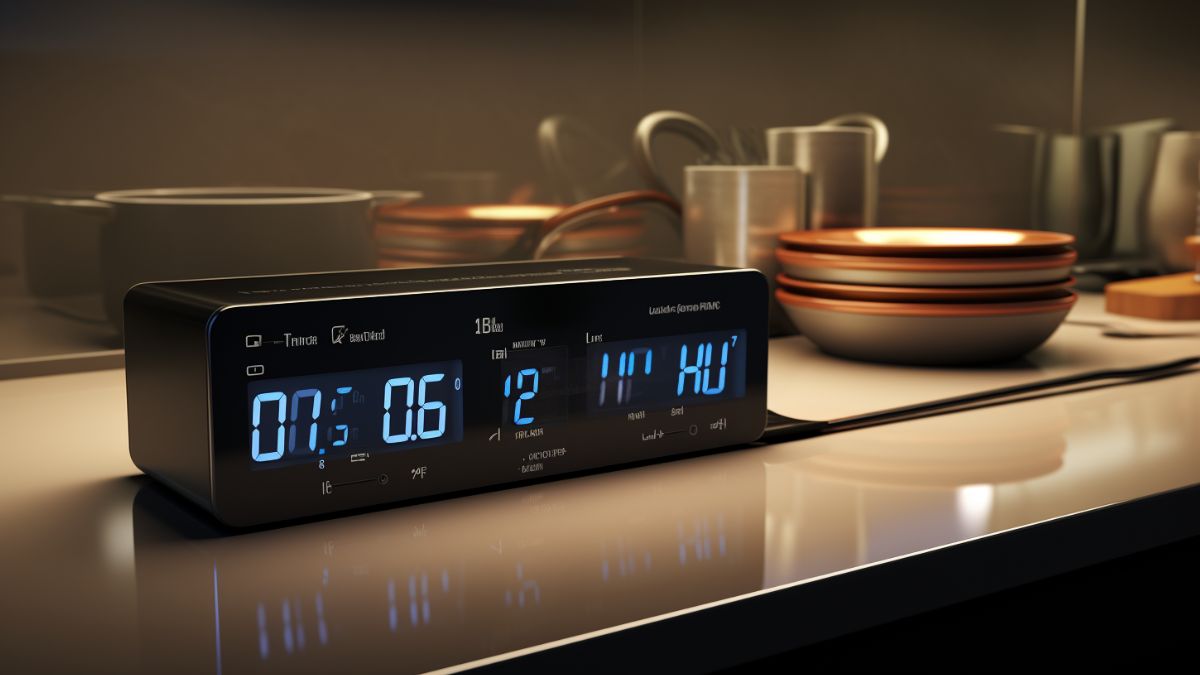Are you tired of feeling uncertain about how much electricity your appliances are consuming? Want to take control of your energy usage and start saving money? Well, look no further! In this article, we will guide you through the process of calculating the watt needs of your appliances.
By understanding the power consumption measurements and making informed choices, you can tailor your energy usage to fit your needs. Say goodbye to high electricity bills and hello to a more efficient and cost-effective lifestyle!
Key Takeaways
- The power consumption of appliances, such as clothes dryers, computers, and hair dryers, can vary depending on their wattage, usage, and efficiency.
- Understanding electrical terminology, such as volts, amps, watts, and kilowatt-hours, is essential when calculating the electricity needs of appliances.
- The cost of powering appliances depends on the average wattage and electricity rates in your area. Using energy-efficient appliances, such as ENERGY STAR certified ones, can help reduce electricity costs.
- Solar panels can offset the cost of powering appliances and save homeowners a significant amount of money over time. It takes an average of 7 to 8 years for homeowners to recoup the cost of their solar panels.
Understanding Power Consumption Measurements
The power consumption measurements for appliances, such as clothes dryers, computers, and hair dryers, are commonly expressed in terms of watts and kilowatt-hours.
To calculate your power needs, you need to understand these electrical measurements. Watts measure the rate of electricity consumption, while kilowatt-hours measure electricity consumption over time.
When it comes to energy efficiency tips, using energy-efficient appliances can help reduce power consumption. For example, ENERGY STAR appliances are more efficient in their electricity usage and cost less money to run compared to non-certified appliances.
Understanding electrical measurements and knowing how to calculate power needs can help you make informed decisions about your energy usage and save money on your electricity bills.
Related Post: Learn How to Calculate the Watt Hours of a Battery.
Power Consumption of Clothes Dryers
To determine the electricity usage of your clothes dryer, you can check the wattage and amperage of the model you have. On average, dryers use 1,500 to 5,000 watts of electricity and connect to a 240-volt outlet. Most dryers use between 7.5 and 30 amps.
The power consumption of clothes dryers can vary depending on the model and usage. Running a dryer once a week uses 156 kWh per year, running it three times a week uses 468 kWh per year, and running it every day uses 1,092 kWh per year.
To reduce electricity usage and lower your energy bills, consider using energy-efficient clothes dryers. These appliances are designed to consume less power and can make a significant impact on your annual energy consumption.
Energy Usage of Computers
Using an average of 50 watts, the amount of time you use your computer has the biggest impact on electricity usage. Here are some key points to consider regarding energy usage of computers:
Understanding energy efficient computer options:
- Laptops typically use about 30 to 70 watts of electricity on average.
- Large desktop and gaming computers use between 200 and 500 watts of electricity on average.
Tips for reducing computer power consumption:
- Use sleep mode or hibernate when not in use.
- Adjust power settings to optimize energy efficiency.
- Unplug peripherals when not in use.
- Consider upgrading to energy-efficient hardware components.
The impact of computer usage on electricity bills:
- Using the computer for 6 hours per day results in approximately 109.5 kilowatt-hours of electricity per year.
- Using the computer for 8 hours per day results in approximately 146 kilowatt-hours of electricity per year.
- Using the computer for 10 hours per day results in approximately 182.5 kilowatt-hours of electricity per year.
Power Consumption of Laptops
Laptops typically use about 30 to 70 watts of electricity on average. To minimize laptop power usage and reduce electricity consumption, it is important to choose energy efficient laptops. These laptops are designed to use less power without compromising performance.
By using energy efficient laptops, you can significantly reduce your electricity consumption and lower your energy bills. Additionally, there are several ways to further minimize laptop power usage. You can adjust the power settings to optimize energy efficiency, reduce screen brightness, and close unused applications.
Utilizing these strategies, along with choosing energy efficient laptops, will not only save you money but also contribute to a more sustainable and environmentally friendly lifestyle. So, consider investing in energy efficient laptops and start reducing your electricity consumption today.
Power Consumption of Desktop and Gaming Computers
If you’re a gamer or have a desktop computer, you should know that large desktop and gaming computers typically use between 200 and 500 watts of electricity on average. This means that the power requirements of these computers can have a significant impact on your electricity consumption.
Here are some key points to consider:
- Gaming computer power requirements: Gaming computers tend to have higher power requirements due to their advanced graphics cards and processors. This means they consume more electricity compared to regular desktop computers.
- Energy efficient desktop options: To reduce electricity consumption, consider investing in energy-efficient desktop options. These computers are designed to optimize power usage without compromising performance.
- Impact of computer usage on electricity consumption: The amount of time you use your computer has the biggest impact on electricity usage. Using your computer for longer periods of time will result in higher electricity consumption.
- Take steps to reduce power consumption: To minimize the impact on your electricity bill, consider using power-saving settings, shutting down your computer when not in use, and investing in energy-efficient components.
Power Consumption of Hair Dryers
In the previous subtopic, we discussed the power consumption of desktop and gaming computers. Now, let’s shift our focus to the power consumption of hair dryers. Hair dryers are commonly used appliances that can have an impact on your electricity bills. On average, hair dryers use about 1,500 to 2,000 watts of electricity.
The duration of usage has the biggest impact on electricity consumption. For example, using a hair dryer for 10 minutes per day will result in approximately 9.13 kilowatt-hours of electricity per month and 109.5 kilowatt-hours per year. Different hair dryer models may have varying power consumption rates.
To reduce hair dryer energy usage, consider the following tips: 1) Use a lower heat setting, 2) Limit the duration of usage, and 3) Look for energy-efficient models. By being mindful of your hair dryer usage, you can effectively manage your electricity consumption and lower your bills.
| Hair Dryer Power Consumption (Average: 1,800 watts) | Electricity Usage per Week | Electricity Usage per Month | Electricity Usage per Year |
|---|---|---|---|
| 5 minutes of usage per day | 1.05 kWh | 4.56 kWh | 54.75 kWh |
| 10 minutes of usage per day | 2.1 kWh | 9.13 kWh | 109.5 kWh |
| 15 minutes of usage per day | 3.15 kWh | 13.69 kWh | 164.25 kWh |
Energy Usage of Light Bulbs
LED light bulbs are a more energy-efficient option, using only about 10 watts of electricity on average. Here are some key points to consider when comparing the energy usage of different light bulbs:
- Incandescent light bulbs typically use 60 watts of electricity, while LED bulbs use only 10 watts. This significant difference in wattage translates to substantial energy savings with LED bulbs.
- Traditional incandescent bulbs can consume anywhere from 25 to 100 watts, whereas LED bulbs range from 2 to 18 watts. By choosing LED bulbs, you can easily adjust the wattage to suit your lighting needs and further reduce energy consumption.
- Using an incandescent light bulb for 2 hours per day results in 12.2 kilowatt-hours of electricity usage per month and 43.8 kilowatt-hours per year. On the other hand, using an LED bulb for the same duration results in only 0.61 kilowatt-hours per month and 7.3 kilowatt-hours per year. This significant difference can have a noticeable impact on your electricity bill.
- By switching to LED light bulbs, you can enjoy energy savings, reduce the wattage of your bulbs, and ultimately lower the cost of powering your lighting fixtures.
Related Article: How to Reduce Electricity Bill – 7 Simple Home Energy Efficiency Ideas.
Cost of Powering Appliances
Switching to LED light bulbs can result in significant energy savings, lower wattage, and reduced electricity costs for your lighting fixtures. LED bulbs use about 10 watts of electricity, compared to traditional incandescent bulbs that use 25 to 100 watts.
By analyzing power consumption patterns and calculating energy savings, you can determine the impact of using LED bulbs on your electricity costs. For example, using a 60-watt incandescent bulb for 1 hour per day results in 21.9 kilowatt-hours of electricity per year, whereas using a 10-watt LED bulb for 2 hours per day results in only 7.3 kilowatt-hours per year. This translates to significant cost savings over time.
Benefits of ENERGY STAR Appliances
By choosing ENERGY STAR appliances, you can save money on your electricity bills and reduce your energy consumption. Here are the benefits of ENERGY STAR appliances:
- Energy Efficiency: ENERGY STAR appliances are certified to be more energy-efficient than non-certified appliances. This means they use less electricity to perform the same tasks, resulting in lower energy consumption.
- Lower Electricity Bills: Due to their energy efficiency, ENERGY STAR appliances cost less money to run compared to non-certified appliances. This can lead to significant savings on your monthly electricity bills.
- Environmental Impact: By reducing your energy consumption with ENERGY STAR appliances, you are also reducing your carbon footprint and contributing to a greener environment.
- Quality and Performance: ENERGY STAR appliances are not only energy-efficient but also meet strict performance standards. This ensures that you are getting appliances that are both efficient and reliable.
Overall, choosing ENERGY STAR appliances is a smart choice for anyone looking to save money, reduce energy consumption, and contribute to a more sustainable future.
Savings With Solar Panel Installation
Installing solar panels can result in significant savings on your electricity bills. Solar panel efficiency plays a crucial role in maximizing these savings.
The efficiency of solar panels refers to their ability to convert sunlight into usable electricity. Higher efficiency panels generate more electricity for the same amount of sunlight, resulting in greater long-term cost savings.
By harnessing renewable energy from the sun, you can reduce your reliance on fossil fuels, which have a detrimental environmental impact. Solar panels also have a long lifespan, typically lasting 25 to 30 years, further contributing to their cost-effectiveness.
In addition to saving money, going solar allows you to contribute to a cleaner and more sustainable future.
Related Post: DIY Solar Panels Installation Made Easy: From Start to Finish.
Conclusion
Congratulations! You’ve successfully gained a comprehensive understanding of power consumption and its associated costs. By calculating the watt needs of various appliances, you can make informed decisions to optimize energy usage and save money.
Remember, ENERGY STAR appliances offer great benefits, reducing both electricity consumption and expenses. Additionally, the installation of solar panels can provide significant savings in the long run. Keep these factors in mind as you strive for energy efficiency and a more sustainable future.




